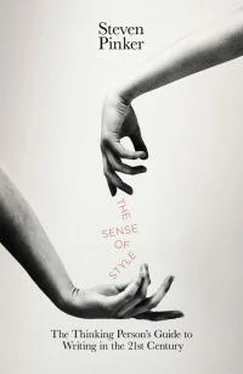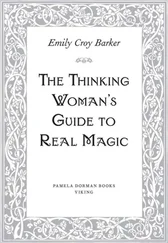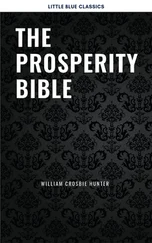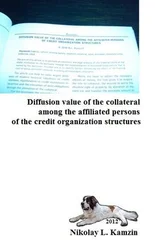Why would anyone think that this perfectly natural construction is ungrammatical? The rationale stated by one rule-giver was that “there is in fact no person named for the him to refer to.” Say what? Is there a neurologically intact reader anywhere who can’t figure out whom the pronoun refers to in Bob’s mother loved him or Stacy’s dog bit her ?
The other rationale is that Toni Morrison’s is an adjective, and pronouns must refer back to nouns. But Toni Morrison’s is not an adjective, like red or beautiful; it’s a noun phrase in genitive case. (How do we know? Because you can’t use genitives in clear adjectival contexts like That child seems Lisa’s or Hand me the red and John’s sweater. ) The confusion comes from the vague impression that the phrase is a “modifier.” But the impression not only confuses a grammatical category (adjective) with a grammatical function (modifier) but also gets the function wrong. Toni Morrison’s isn’t functioning as a modifier, which shades the meaning of genius, but as a determiner, which pins down its referent, in the same way that an article like the or this would do. (How do we know? Because a count noun cannot stand on its own—you can’t say Daughter cooked dinner— and a modifier doesn’t help; Beautiful daughter cooked dinner is still bad. But add either an article, as in A daughter cooked dinner, or a genitive, as in Jenny’s daughter cooked dinner, and the sentence is complete. This shows that genitives have the same function as articles, namely determiner.)
As with any pronoun, a writer can confuse his readers if he fails to make the antecedent clear, such as in Sophie’s mother thinks she’s fat, where we don’t know whether it’s Sophie or her mother who is thought to be fat. But that has nothing to do with the antecedent being in the genitive case; it’s just as much of a problem in Sophie and her mother think she’s fat.
Though it’s only fair that the students who thought they spotted an error got credit for their answer (since they may have been miseducated by purists), the ire of language lovers ought to be directed at the stylistic clumsiness of the godawful sentence about Toni Morrison, not at a fictitious error in it.
preposition at the end of a sentence.Winston Churchill did not, as legend has it, reply to an editor who had corrected his prose with “This is pedantry up with which I will not put.” 15Nor is that witticism (originally from a 1942 Wall Street Journal article) a particularly good example of the construction that linguists call preposition stranding, as in Who did you talk to? or That’s the bridge I walked across. The particle up is an intransitive preposition and does not require an object, so even the most pedantic of pedants would have no objection to a phrase like This is pedantry with which I will not put up.
Though the attribution and the example are spurious, the mockery is appropriate. As with split infinitives, the prohibition against clause-final prepositions is considered a superstition even by the language mavens, and it persists only among know-it-alls who have never opened a dictionary or style manual to check. There is nothing, repeat nothing, wrong with Who are you looking at? or The better to see you with or We are such stuff as dreams are made on or It’s you she’s thinking of. The pseudo-rule was invented by John Dryden based on a silly analogy with Latin (where the equivalent to a preposition is attached to the noun and cannot be separated from it) in an effort to show that Ben Jonson was an inferior poet. As the linguist Mark Liberman remarked, “It’s a shame that Jonson had been dead for 35 years at the time, since he would otherwise have challenged Dryden to a duel, and saved subsequent generations a lot of grief.” 16
The alternative to stranding a preposition at the end of a clause is allowing it to accompany a wh- word to the front, a rule that the linguist J. R. (Haj) Ross dubbed pied-piping, because it reminded him of the way that the Pied Piper lured the rats out of the village of Hamelin. The standard question rule in English converts You are seeing what? into What are you seeing? and hence You are looking at what? into What are you looking at? The pied-piping rule allows the what to pull the at with it to the front of the sentence, yielding At what are you looking? The same rule creates relative clauses that begin with a preposition and a wh -word such as the better with which to see you or It’s you of whom she’s thinking.
Sometimes it really is better to pied-pipe a preposition to the beginning of a clause than to strand it at the end. Most obviously, pied-piping sounds better in a formal style. Abraham Lincoln knew what he was doing at the graves of the fallen soldiers at Gettysburg when he vowed “increased devotion to that cause for which they gave the last full measure of devotion,” rather than “increased devotion to that cause which they gave the last full measure of devotion for.” Pied-piping is also a good choice when a stranded preposition would get lost in a hubbub of little grammatical words, such as One of the beliefs which we can be highly confident in is that other people are conscious. The sentence is easier to parse when the role of the preposition is settled before we get to that busy crossroads: One of the beliefs in which we can be highly confident is that other people are conscious.
A good piece of advice on when to pied-pipe and when to strand comes from Theodore Bernstein, who invokes the principle emphasized in chapter 4: select the construction that allows you to end a sentence with a phrase that is heavy or informative or both. The problem with stranding a preposition is that it can end the sentence with a word that is too lightweight to serve as its focal point, making the sentence sound like “the last sputter of an engine going dead.” As an example Bernstein cites He felt it offered the best opportunity to do fundamental research in chemistry, which was what he had taken his Doctor of Philosophy degree in. By the same principle, a preposition should be stranded at the end of a sentence when it contributes a crucial bit of information, as in music to read by, something to guard against, and that’s what this tool is for , or when it pins down the meaning of an idiom, as in It’s nothing to sneeze at, He doesn’t know what he’s talking about, or She’s a woman who can be counted on.
predicative nominative.When you come home after a day at the office, do you call out to your spouse, “Hi, honey, it’s I”? If you do, you are the victim of a schoolmarm rule that insists that a pronoun serving as the complement of be must be in nominative case ( I, he, she, we, they ) rather than accusative case ( me, him, her, us, them ). According to this rule, Psalms (120:5), Isaiah (6:5), Jeremiah (4:31), and Ophelia should have cried out, “Woe is I,” and the cartoon possum Pogo should have reworded his famous declaration as “We have met the enemy, and he is we.”
The rule is a product of the usual three confusions: English with Latin, informal style with incorrect grammar, and syntax with semantics. Though the referent of the noun phrase after be is the same as that of the subject (enemy = we), the case of the noun phrase is determined by its position after the verb, which can always be accusative. (The accusative case is the default in English, and it can be used anywhere except in the subject of a tensed verb; thus we have hit me, give me a hand, with me, Who, me?, What, me get a tattoo?, and Molly will be giving the first lecture, me the second. ) Accusative predicates have been used for centuries by many respected writers (including Pepys, Steele, Hemingway, and Woolf), and the choice between It is he and It is him is strictly one of formal versus informal style.
Читать дальше












